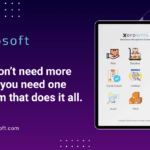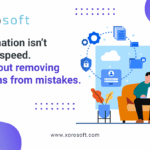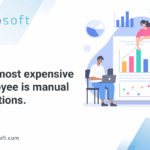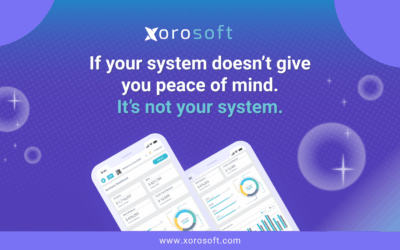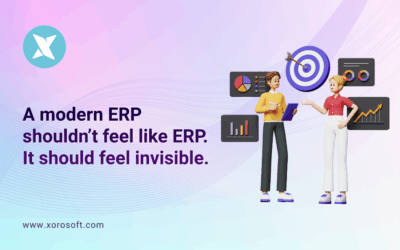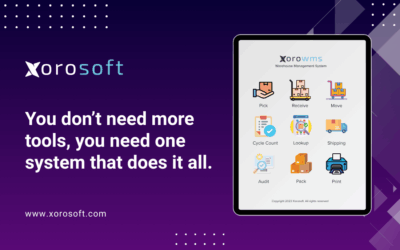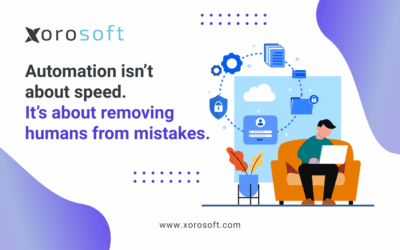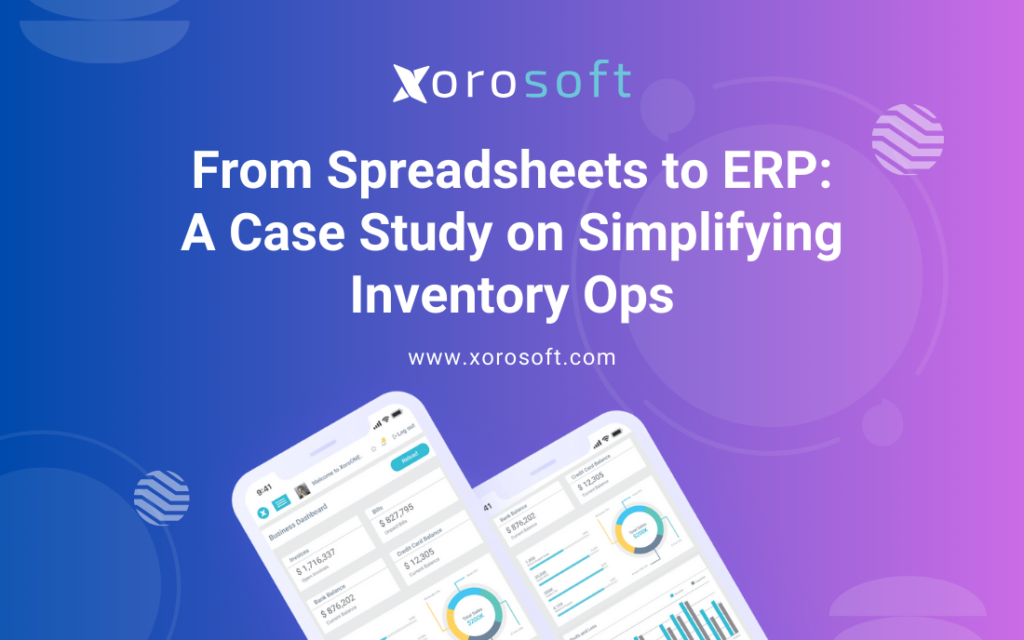
Why This Inventory ERP Case Study Matters
This inventory ERP case study highlights a simple truth: efficiency drives growth. Every leader running an omnichannel brand knows the stakes. Customers expect accurate stock promises, same-day shipping, and transparent order tracking. Finance teams want clean numbers they can trust. Operations must coordinate warehouses, channels, and vendors without delays.
Spreadsheets might have worked in the early days. However, as your sales grow across Shopify, Amazon, wholesale, and retail, manual updates create avoidable handoffs. Teams spend hours reconciling data instead of guiding decisions. Inventory becomes a guessing game, cash flow feels cloudy, and growth takes more effort than it should.
That is why this inventory ERP case study is timely. It demonstrates how brands that move to ERP don’t just automate; they also unlock a future where inventory stays accurate in real time, finance closes faster, and fulfillment flows without friction. In other words, ERP creates the control and clarity you need to grow confidently.
What Great Looks Like
When inventory ops run on an integrated ERP, here’s how outcomes translate into fulfilled desires:
-
Real-time stock visibility → confident purchasing decisions
-
Accurate orders across channels → customers receive what you promised
-
Automated accounting entries → finance spends time guiding, not reconciling
-
Warehouse tracking by bins and lots → teams move faster and with fewer errors
-
Trusted reporting → leadership sees the numbers they need, when they need them
Avoidable Friction Points—and What to Do Instead
Even the best teams hit slowdowns when relying on spreadsheets or siloed tools. Here are common gaps you can sidestep:
1. Manual updates across systems.
Instead: Use ERP integrations with Shopify and Amazon to sync orders and stock in real time.
2. Fragmented workflows between warehouse and finance.
Instead: Connect WMS and accounting in one platform so transactions flow automatically.
3. Reactive purchasing.
Instead: Leverage ERP demand planning and PO automation to reorder before stockouts happen.
4. Delayed reporting.
Instead: Generate timely, accurate dashboards for inventory, cash flow, and performance without waiting for manual consolidations.
Therefore, every improvement compounds into faster decisions and more reliable execution. In addition, each resolved friction point makes scaling smoother and less stressful. Overall, the organization gains consistency, speed, and trust in its numbers.
The Path Forward: From Discovery to Daily Use
Moving from spreadsheets to ERP doesn’t need to be overwhelming. Think of it as a four-step framework:
1. Discover – Audit your current workflows and identify friction points.
2. Design – Map desired outcomes (e.g., faster fulfillment, fewer reconciliations).
3. Implement – Configure ERP modules around inventory, warehouse, purchasing, and finance.
4. Measure – Track KPIs like order cycle time, reconciliation hours saved, and fulfillment speed.
Checklist your team can start this week:
-
Document every manual inventory update made in spreadsheets.
-
Identify how many systems need duplicate entries (e.g., Shopify + warehouse + QuickBooks).
-
Track how long finance spends reconciling sales and COGS.
-
List the top three customer promises you cannot afford to miss (e.g., same-day shipping).
-
Note your stockout frequency by channel.
-
Review vendor lead times and how you record them.
-
Ask teams where delays most often occur.
-
Choose one metric to improve first, such as reconciliation hours.
In addition, share this checklist across teams so everyone contributes to the transition. Consequently, adoption feels like a collective win instead of a top-down mandate. Meanwhile, managers gain visibility into the areas that require the most urgent fixes.
How Xorosoft ERP Supports Inventory Workflows
Here’s how Xorosoft ERP translates features into outcomes and fulfilled desires:
-
Real-time inventory sync → fewer stockouts and oversells → reliable customer promises
-
Built-in WMS (bins, picks, packing, shipments) → faster fulfillment → happier customers
-
Automated accounting entries → less reconciling → finance focuses on guidance
-
Purchase orders with timely reporting → confident cash and reordering decisions
-
Multi-location + lot/serial tracking → control and compliance → peace of mind
Xorosoft is ranked #1 in Ease of Use on G2 (see ranking) and is available on the Shopify App Store. Consequently, it brings modern ERP within reach for growing brands.
Inventory ERP Case Study: A Real-World Example
A mid-sized apparel brand selling through Shopify and wholesale distributors used spreadsheets to reconcile sales weekly. Stockouts on bestsellers cost them thousands each month.
After implementing Xorosoft ERP, everything shifted:
-
Inventory synced daily across Shopify, warehouse, and finance
-
Finance cut reconciliation from 10 hours per week to just 2
-
Stockout rate dropped by 40% in the first quarter
-
The team scaled into two new marketplaces with confidence
Consequently, this inventory ERP case study proves how ERP simplifies operations while reducing financial risk. Above all, it shows that growth becomes smoother when systems align. To illustrate, the apparel brand not only reduced errors but also expanded without additional headcount.
Tangible ROI and Risk Reduction
Brands moving from spreadsheets to ERP often see measurable gains within months. For example:
-
Order cycle time:25–40% faster
-
Finance reconciliation hours: 6–10 hours saved each week
-
Stockout rate:down 30–50%
-
Cash conversion cycle: improved by 10–15 days
Moreover, these improvements lower operational risk while supporting future growth. Not only do you save time, but you also unlock new capacity for expansion. In other words, the investment pays off both operationally and financially. Overall, ERP reduces uncertainty while building a stronger foundation for scale.
What a 30–60 Day Implementation Looks Like
Roles involved: Ops Manager, Finance Lead, Warehouse Lead, IT/Admin
Milestones:
-
Week 1–2: Workflow discovery and design
-
Week 3–4: ERP configuration (inventory, finance, warehouse)
-
Week 5: Data migration and testing
-
Week 6–8: Training and go-live
What “done” looks like:
-
Orders flow automatically from Shopify into ERP
-
Warehouse teams pick and ship from ERP WMS
-
Finance receives daily automated entries
-
Leaders access dashboards for sales, stock, and cash flow
To de-risk, start with one channel (e.g., Shopify) before expanding to wholesale or additional warehouses. As a result, adoption feels smoother and less risky. Meanwhile, your team gains confidence step by step. Finally, leadership sees measurable results within weeks, which reinforces trust in the system.
Frequently Asked Questions
Will ERP integrate with Shopify and Amazon?
Yes. Xorosoft ERP is listed on the Shopify App Store and integrates directly with major channels.
How long does implementation take?
Most brands go live within 30–60 days, depending on complexity.
What about existing data in spreadsheets?
Migration tools quickly import historical sales, inventory, and vendor data.
Do teams need heavy training?
Not with Xorosoft. It’s ranked #1 in Ease of Use on G2 (see ranking). Most users feel comfortable within days.
How do I know if reporting will cover my needs?
Standard dashboards include inventory, sales, finance, and fulfillment. In addition, custom reports can be added without complexity.
Moving Toward Clarity in Operations
Ready to simplify inventory operations and give your team clarity? Book a demo and see how Xorosoft connects Shopify, Amazon, and wholesale into one source of truth.


